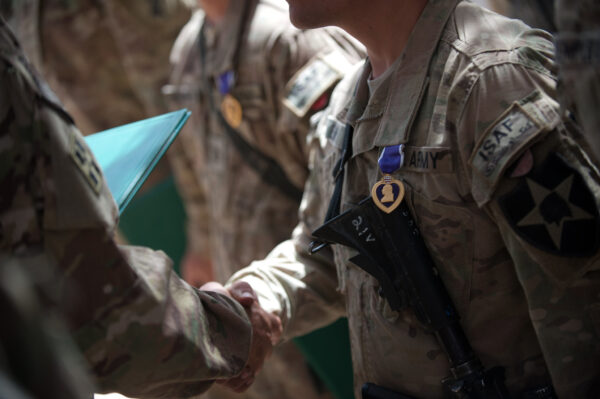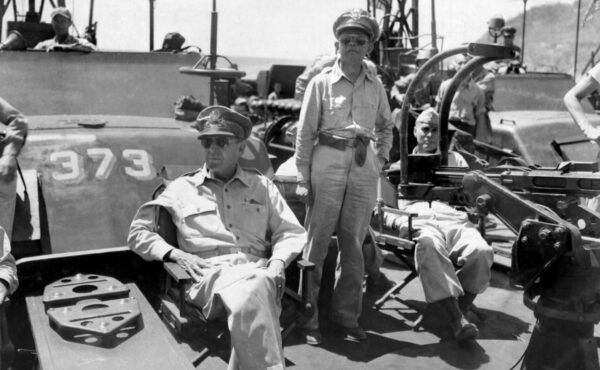
Chief of Staff Gen. Raymond T. Odierno shaking the hand of Soldier who was awarded a Purple Heart for his service in Afghanistan. (Photo: U.S. Army)
962,403 — 137,023 — 200,740 — 615 — 36,412 — 22,499: the estimated number of fallen and wounded Service Members in each major U.S. conflict since World War II to have been awarded at least one Purple Heart, based on casualty research conducted by both the Department of Veterans Affairs and the Department of Defense.
Memorial Day honors the fallen, and Veterans Day honors those who have survived their service — but many Americans are unaware of the ongoing struggle of surviving Veterans and Service Members who were wounded in action.
Purple Heart Day, held each August 7, acknowledges this gap by commemorating both the fallen and those who have endeavored to go on after sustaining grievous injuries in combat. Though not recognized as a federal holiday, California and many cities officially recognize this day as a time to reflect and thank Veterans and Service Members for their service.
The History and Evolution of the Purple Heart
The Purple Heart is a relatively new award in United States history. Its origins are rooted in the American Revolutionary War, when General George Washington created the Badge of Military Merit to recognize exemplary service by soldiers of the Continental Army, much in the same vein as the Medal of Honor does today.
The award was ultimately phased out after the war because — in an attempt to preserve morale — it largely served as a consolation in place of promotions, which were frozen by a Continental Congress struggling to fund the rebellion against Britain.
The Badge of Military Merit would, however, serve as the inspiration for the Purple Heart commissioned by Army Chief of Staff (and notable World War II figure) Douglas MacArthur in 1932, on the 200th anniversary of George Washington’s birthday.

Gen. Douglas MacArthur, 1945 (Photo: John Tewell)
Initially, the award was meant to recognize the heroic actions of wounded Service Members who fought in the First World War. Nearly 10 years later, the advent of World War II and the horrific casualty numbers the war brought led President Franklin D. Roosevelt to drop the meritorious requirement while approving the expansion of the award’s eligibility to fallen Service Members. From 1942 on, the Purple Heart would acknowledge any Service Member forced to sacrifice their physical well-being, or life, in combat.
Establishment of Purple Heart Day
 While the Purple Heart has existed for nearly 100 years (and is actually the longest active award presented to American Service Members) it wasn’t until Congress passed a resolution in 2014 officially recognizing National Purple Heart Day.
While the Purple Heart has existed for nearly 100 years (and is actually the longest active award presented to American Service Members) it wasn’t until Congress passed a resolution in 2014 officially recognizing National Purple Heart Day.
Many states, counties, and cities across the United States, including many in California, honor Veterans and Service Members with an observed silence. The MLB honors local recipients during special in-game ceremonies. And organizations like The American Legion, the National Purple Heart Honor Mission, and many more encourage communities to support their local veterans through donations, events, and often, by simply listening to a story or two.













